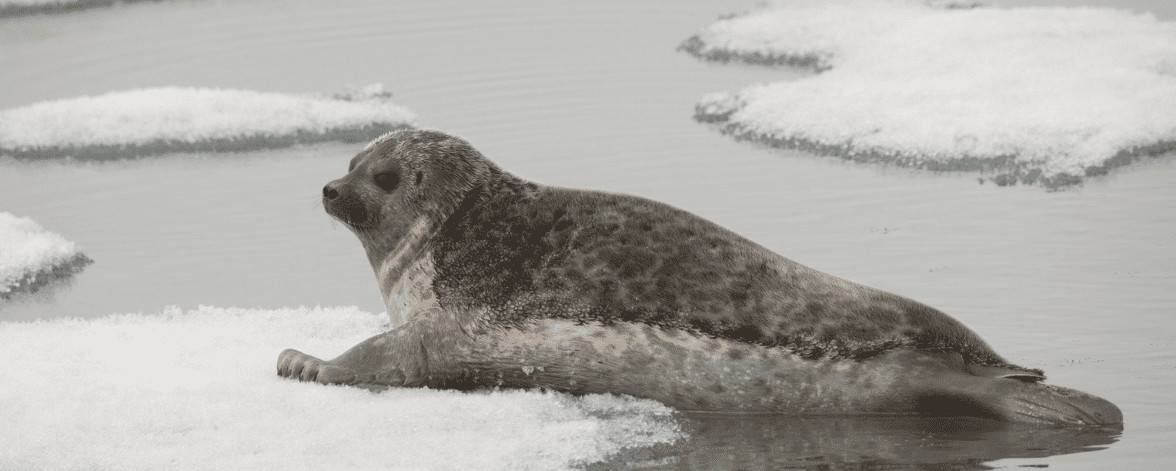
Ringed seals are the smallest and the most abundant Arctic seal species, inhabiting Arctic and subarctic regions across the Northern Hemisphere. They are highly adapted to life on and under the sea ice, using their sharp claws to maintain breathing holes in ice over 1.8 meters (6 feet) thick.
Adult ringed seals typically grow to only about 1.2-1.4 meters (4-4.5 feet) and weigh 50–68 kilograms (110–150 pounds). They get their name from the distinctive rings on their dark coat. This dense coat of fur, along with thick blubber, provides much-needed insulation against the frigid Arctic waters. Ringed seals spend much of their time in the water, where they hunt small prey like schooling fish, shrimp, krill, and cephalopods.
These seals rely heavily on sea ice for resting, molting, and giving birth, with most rarely ever coming ashore. In the winter through early spring, females create snow lairs above their breathing holes to protect newborn pups from predators and the cold. Polar bears, walruses, and killer whales all prey on ringed seals, and arctic foxes will also hunt pups while they are on the ice.